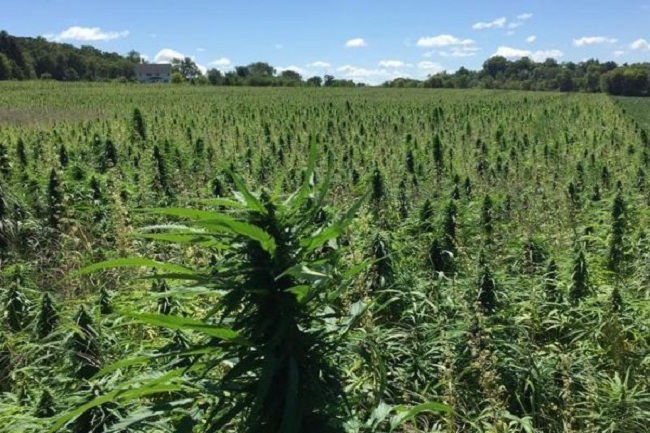Zimbabwe Legalises Growing Of Hemp
Zimbabwe will change its laws to allow farmers to grow industrial hemp for export, cabinet ministers said on Tuesday, adding that the government saw the plant as a future substitute for tobacco, the country’s biggest export earning crop.
Industrial hemp is a strain of a cannabis species that is grown specifically for industrial uses of its derived products. Its fiber is used in textiles and paper, and it also produces edible seeds.
The southern African nation’s laws only allow cultivation of cannabis for medical and scientific uses.
Authorities said last year in April that Zimbabweans could apply for licenses to grow cannabis for medical and research purposes, but the process has been slow as authorities try to put in place laws to ensure cannabis farms are secure.
“But with hemp, it’s not toxic as cannabis,” acting industry and commerce minister July Moyo told a post-cabinet media conference
“The minister of justice has been directed to say ‘go and make amendments’ to the criminal code in our system so that people who will grow hemp don’t have to be criminalized.”
Information Minister Monica Mutsvangwa told the same meeting that “industrial hemp will widen the country’s industrial and export base.”
There is also increasing interest in the United States by farmers to grow industrial hemp, UPI reported.
The U.S. Constitution was written on hemp paper, and Betsy Ross’ first American flag was made of hemp fabric, but the road back to hemp fiber textiles grown in the United States will take a while, industry experts say.
Thousands of U.S. farmers have planted hemp this year, hoping to cash in on the revival of a historic American crop that was illegal to grow for more than 80 years. A member of the cannabis family and cousin to marijuana, hemp was taken off the illegal federal Schedule 1 status in the 2018 Farm Bill.
But most farmers choose to grow the CBD variety of hemp, which is a short, bushy plant, compared to hemp grown for fiber and textiles — a long, reedlike plant that can reach 15 feet tall.
Hemp fibre was used for rope, sails, and canvas in the past. But now, a sophisticated yarn made from hemp fibres can be used in materials from cotton blends to upholstery fabric to silk. The long fibers are naturally stronger and last longer than cotton.
“Hemp doesn’t wear out, it wears in,” said Summer Star Haeske of Colorado-based EnviroTextiles LLC. The plant fiber also has a natural moisture-wicking process and is breathable, and the cloth is anti-bacterial and has a natural SPF function, blocking ultraviolet light.
It’s also cheaper. An imported hemp blend with silk costs $30 per yard, compared to pure silk, which costs $40, Star Haeske said.




